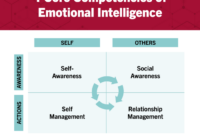Bi business intelligence definition – Embark on a journey into the realm of business intelligence (BI), where data transforms into actionable insights. BI empowers organizations to make informed decisions, optimize operations, and propel growth. Dive into this comprehensive guide to unravel the essence of BI, its benefits, and the technologies that fuel data-driven success.
Business intelligence (BI) is the process of gathering, storing, and analyzing data to improve decision-making. BI can be used to identify trends, patterns, and opportunities that can help businesses grow. For more information on BI, visit blog.dosenpintar.com business intelligence.
BI can also be used to track performance and measure the effectiveness of marketing campaigns.
From understanding the fundamental concepts to exploring advanced applications, this guide provides a roadmap for harnessing the power of BI. Prepare to unlock the secrets of data and gain a competitive edge in today’s data-centric business landscape.
1. Definition and Overview of Business Intelligence (BI)

Business intelligence (BI) empowers organizations with the ability to make informed decisions by providing insights into their data. It encompasses a range of processes, technologies, and practices that enable businesses to gather, analyze, and interpret data to gain a deeper understanding of their operations, customers, and market trends.
BI systems typically consist of data warehouses, data mining tools, and reporting and visualization software. These components work together to collect, clean, and transform raw data into actionable insights that can be used to improve decision-making, enhance operational efficiency, and drive growth.
2. Benefits and Applications of BI
BI solutions offer numerous advantages to businesses, including:
- Enhanced decision-making: BI provides real-time insights that help businesses make data-driven decisions and respond quickly to changing market conditions.
- Improved operational efficiency: BI can identify inefficiencies and bottlenecks in business processes, allowing organizations to streamline operations and reduce costs.
- Increased revenue and profitability: BI helps businesses identify opportunities for growth, optimize pricing strategies, and improve customer satisfaction.
BI has a wide range of applications across various industries, including:
- Retail: Analyzing customer behavior, optimizing inventory management, and forecasting demand.
- Healthcare: Improving patient outcomes, reducing costs, and enhancing operational efficiency.
- Finance: Managing risk, detecting fraud, and optimizing investment strategies.
3. Types of BI Tools and Technologies
| Tool Name | Key Features | Advantages | Limitations |
|---|---|---|---|
| Tableau | Interactive dashboards, data visualization, and predictive analytics | User-friendly interface, drag-and-drop functionality, wide range of visualizations | Limited data storage capacity, can be expensive for large datasets |
| Power BI | Data integration, reporting, and visualization | Integration with Microsoft products, powerful data modeling capabilities, cost-effective | Steep learning curve, limited customization options |
| QlikView | In-memory analytics, associative data model, and advanced visualization | Fast performance, intuitive interface, ability to handle large datasets | Limited data integration capabilities, can be complex for non-technical users |
4. Data Sources and Integration for BI
Effective BI implementation requires access to reliable and relevant data sources. Common data sources include:
- Databases: Relational databases (e.g., MySQL, Oracle) and NoSQL databases (e.g., MongoDB, Cassandra)
- Spreadsheets: Microsoft Excel, Google Sheets
- Cloud platforms: Amazon Web Services (AWS), Microsoft Azure, Google Cloud Platform (GCP)
Data integration is crucial for combining data from multiple sources into a cohesive and consistent dataset. Techniques include:
- ETL (Extract, Transform, Load): Extracting data from source systems, transforming it into a consistent format, and loading it into a data warehouse.
- ELT (Extract, Load, Transform): Similar to ETL, but data is transformed after it is loaded into the data warehouse.
Concluding Remarks

In the tapestry of business intelligence, data emerges as the golden thread, connecting insights to actions. As we conclude our exploration, remember that BI is not merely a collection of tools and techniques; it’s a mindset that empowers organizations to embrace data-driven decision-making. By harnessing the transformative power of BI, businesses can unlock unprecedented value, drive innovation, and achieve lasting success.
BI (business intelligence) empowers businesses with data-driven insights. By harnessing the power of artificial intelligence ( businesses using artificial intelligence ), BI tools can analyze vast amounts of data to uncover trends, patterns, and anomalies. This enables businesses to make informed decisions, optimize operations, and gain a competitive edge.
With BI, organizations can transform raw data into actionable insights, driving growth and success.
Question Bank: Bi Business Intelligence Definition
What is the primary purpose of business intelligence?
Business intelligence aims to transform raw data into actionable insights that empower organizations to make informed decisions, improve operational efficiency, and drive growth.
How can BI benefit businesses?
BI (business intelligence) is a technology-driven process that analyzes data and presents actionable insights. Looker business intelligence is one of the leading BI tools, empowering businesses to make data-driven decisions. With Looker, you can easily connect to various data sources, create interactive dashboards, and generate reports to uncover hidden patterns and trends within your data.
This enables you to optimize operations, improve customer experiences, and drive growth.
BI offers a multitude of benefits, including enhanced decision-making, improved operational efficiency, increased revenue, reduced costs, and a competitive advantage.
What are the key components of a BI system?
BI systems typically comprise data sources, data integration tools, data analysis tools, data visualization tools, and reporting tools.
What are the common challenges in BI implementation?
Common challenges include data quality issues, data security concerns, organizational resistance to change, and a lack of skilled professionals.




